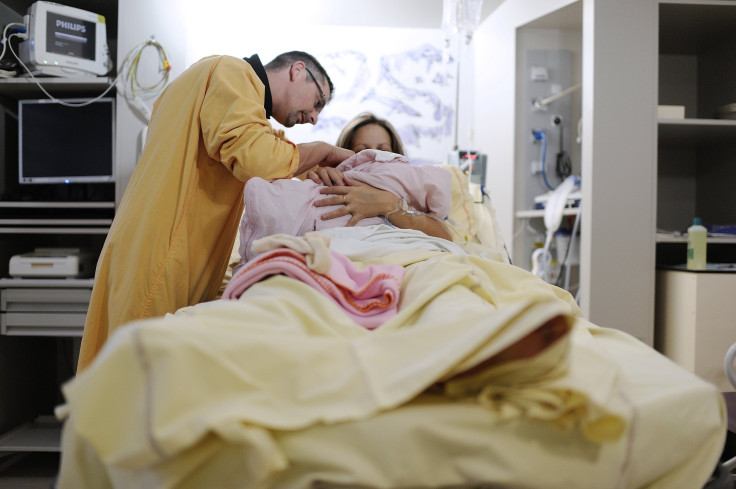Induced Labor May Prevent Stillbirth, Other Adverse Events In Mothers And Newborns; Pregnant Women Should Still Be Cautious

Induced labor may be perfectly safe for mothers and newborn babies, according to a new clinical trial from the University of Nottingham in the United Kingdom.
There’s an ongoing debate that induced labor is beneficial for pregnant women aged 35 and older. Among those in support of it, some experts believe induction at 39 weeks can reduce the risk for stillbirth. Those against it fear waiting that long increases that risk instead. The Mayo Clinic has also found that induced labor can result in premature birth, the need for a cesarean section, and too many contractions that can lower the baby’s oxygen supply and heart rate.
But in November 2015, the National Institutes of Health analyzed national infant birth and death statistics from 2006 to 2012 and found delaying delivery until 39 weeks did not increase the national stillbirth rate. The Nottingham trial seems to echo that finding.
Researchers randomly assigned more than 600 pregnant volunteers to one of two groups: one had labor induced at 39 weeks, the other received expectant care. Researchers used an IV hormone drip or a pessary, which presses against the wall of the vagina and urethra, to induce labor. Women assigned to expectant care either waited until labor naturally took place or else developed a medical problem requiring an obstetric intervention, like a C-section or vacuum-assisted delivery.
Researchers did not find any significant differences between the two groups in the number of women who needed an intervention or in adverse outcomes for mothers and newborns. While these findings may support inducing more women, the general consensus is induced labor is best reserved for women in medical need. Though induced labor may not lead to more stillbirths, it could still cause other complications.
This finding was a surprise to study co-author Jim Thorton, a professor of obstetrics and gynecology at the University of Nottingham. Thorton said in a press release that the trial was not designed to test induction as a way to avoid stillbirth, and yet the findings suggest it’s a worthwhile area of research.
"Some people say why not just induce everyone at 39 weeks and prevent some stillbirths. Others say that would [medicalize] many normal pregnancies, [lead to an] increase in intervention rates, and may have long term unintended harms," Thorton said. "Ours is the first clinical trial to provide some hard evidence to help decision-making among doctors and older first-time mothers-to-be. The results support the 'induce more women' advocates, although there are still reasons for caution."
For one, pregnancy loss is thought to be a greater risk for women who become pregnant at or after the age of 35; this includes stillbirth and miscarriage. Women who wait to get pregnant may also be at greater risk of developing gestational diabetes and high blood pressure during pregnancy. What's more, older women may be more likely to have a premature delivery or C-section, according to the Mayo Clinic.
According to the March of Dimes Foundation, stillbirth affects about 23,600 babies each year in the United States, which is less than 1 percent of pregnancies. Certain infections and pregnancy complications can cause stillbirth, but for the most part, definitive causes remain unknown. Women may be more likely than others to have a stillbirth if they are obese, have a medical condition like diabetes, are pregnant with twins, are pregnant for the first time, have previously had a miscarriage or stillbirth, or have had previous pregnancy complications, including pre-term birth and preeclampsia.
For trial researcher Chris Wild Smith, who has lost a baby through stillbirth, the present findings are a step in the right direction.
"I'm really encouraged by the results of the study, especially as it has covered such a difficult subject and area [where it] isn't easy to suggest studies or research without creating more angst or worry among future parents," Smith said. "I really hope the work can generate more discussion [around] the clinical approach and how to address risk groups. I do hope for all our stillborn children that the evidence will avoid more families going through the traumatic pain and hurt that we endured."
Source: Walker KF, Bugg GJ, Macpherson M, et al. Randomized{q1} Trial of Labor Induction in Women 35 Years of Age or Older. New England Journal of Medicine. 2016.



























